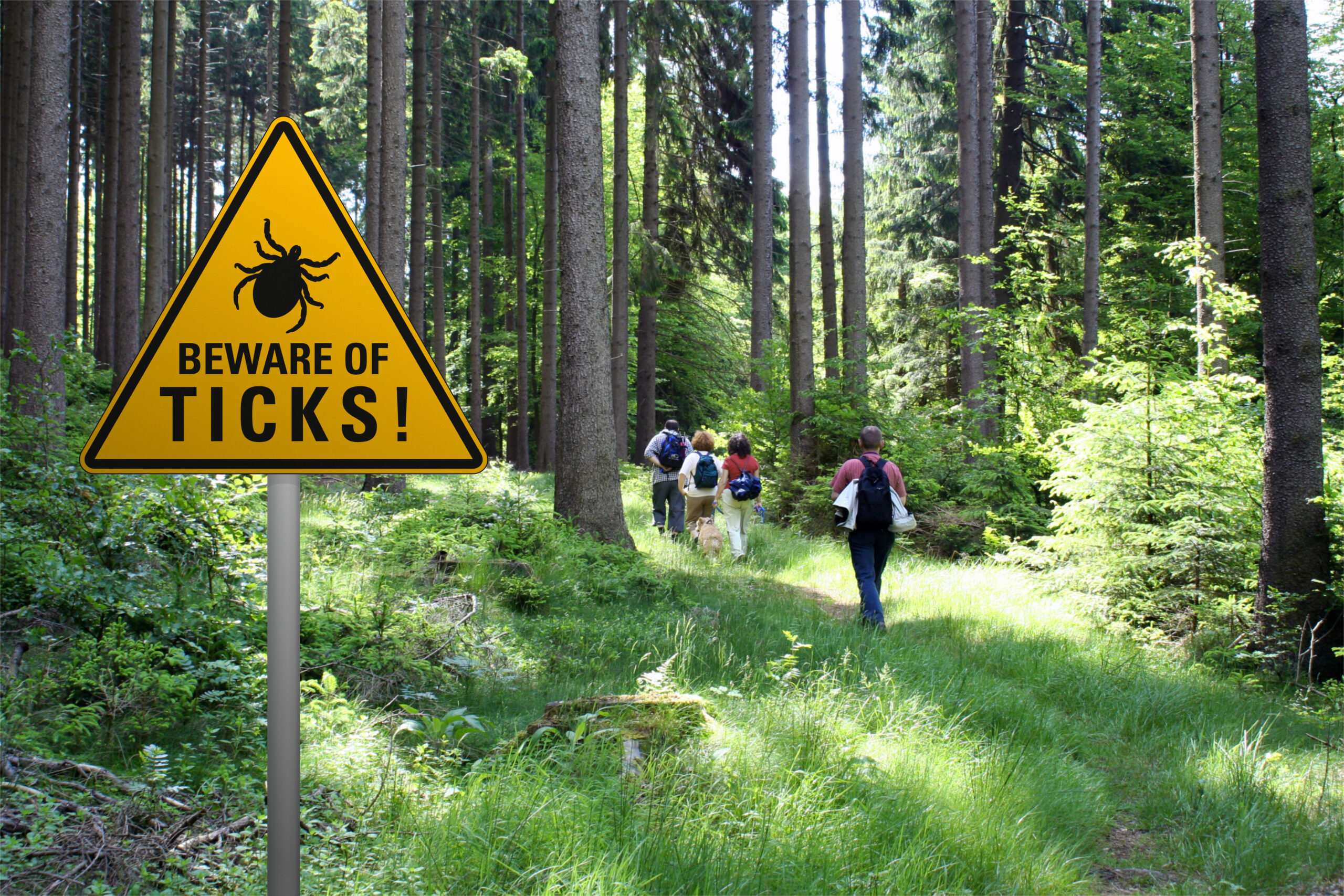
As spring warmth draws Oregon residents out of their houses and into the green, tick nymphs will be waiting, arms outstretched, hoping to find their next meal from a human host.
Human encounters with ticks are skyrocketing as climate change and other factors expand their territory and swell their numbers. Oregon is home to the western blacklegged (deer) tick, which spreads Lyme Disease. In the past six years, an average of 40-50 confirmed and probable human cases of Lyme Disease were reported in Oregon each year, according to the Oregon Department of Public Health’s (ODPH) latest count.
Most outdoorsy people are rightly wary of the tiny arthropods, which, despite their painless bites, can transmit more than a dozen harmful diseases. As a nurse practitioner at Legacy-GoHealth Urgent Care, here are my tips for preventing and managing tick bites to cut the risk and keep enjoying the outdoors.
1. Before you go: Learn about the types of ticks in the area and the diseases they carry. Ticks can be tiny and extremely hard to find. Unfed nymphs are about the size of a poppy seed and unfed adults are more like a sesame seed or an apple seed.
Blacklegged ticks, also known as deer ticks, can transmit several diseases, including Lyme disease. They cause the most problems in spring, summer, and fall in the Northeast, Upper Midwest, and Mid-Atlantic. Aggressive lone star ticks are common in the South and East and feed from early spring through late fall. Their irritating bites can cause a variety of diseases and are associated with Alpha-gal syndrome, an allergy to milk and meat that can be life-threatening. American dog ticks, also known as wood ticks, are common east of the Rockies. They bite in the spring and summer and can spread tularemia and Rocky Mountain spotted fever.
2. How to protect yourself outside: If you’re outside regularly, use an insect repellent containing DEET to prevent ticks from getting on your body. The U.S. Centers for Disease Control (CDC) also recommends treating outerwear, boots, and camping gear with products containing 0.5% permethrin, which is an insecticide and repellent that doesn’t affect people when it is dry. You can buy permethrin-treated gear through some retailers, or you can apply it to clothing and gear yourself, but you must follow strict safety precautions.
The CDC offers landscaping tips that discourage ticks, such as putting decks, patios, and play structures in sunny areas and creating a three-foot buffer of gravel or woodchips between woods and recreational areas. Choose light-colored outdoor clothing to make it easier to spot any ticks that have latched on. Finally, once outdoors, keep pant legs tucked into socks and shirts tucked into waistbands to avoid giving a hitchhiking tick direct access to your skin.
3. Keep ticks out of your immediate environment: As soon as you’re inside, drop your clothes in the dryer and run it on high heat for at least ten minutes. High, dry heat kills ticks because they are sensitive to arid environments. Damp clothes may need even more time in the dryer. If the clothes need washing first, use hot water. In the meantime, promptly perform a thorough tick check of everyone who was outside.
Check for ticks on children, paying special attention to hiding places such as in and around the hair, in and behind ears, in body folds such as the groin, armpits, and the back of knees, in the belly button, and around the waist. If there is no other adult to help with your own check, use a hand mirror or a full-length mirror to make sure you’ve thoroughly checked your body. Once clear, jump in the shower to rinse off any unattached ticks.
4. Don’t forget pets: Pets can carry ticks to you and are susceptible to some tick-borne diseases, too. Talk to your veterinarian before using pesticides and repellents around pets. Check for ticks daily on pets that spend time outdoors in tick habitat – especially in and around the ears, around the eyelids, around the tail, under the collar, under the front legs, between the back legs, and between the toes. Remove any ticks immediately and consult your veterinarian.
5. Tick removal: If you find a tick, remove it immediately. The longer it is embedded, the greater the chance it can transmit diseases. While some tick diseases can be transmitted in minutes, the bacteria that causes Lyme lives in the tick’s midgut and isn’t usually transmitted until the tick has fed for 36 hours or more, Smithers said.
Put on gloves if you have them, and get a pair of fine-tipped tweezers or a specialty tick removal tool. Grasp the tick as close to the skin as possible and pull straight out using pressure that is firm but not crushing. Do not twist or jerk, which may cause mouthparts to detach and remain in the skin, causing infection. Don’t crush the tick or attempt to burn it or coat it with nail polish remover or ointment.
Place the tick in a sealed bag or jar in case a physician needs to identify it. You can also take photos of the tick on a light-colored background and next to a reference item, such as a ruler, coin, or pin. Finally, swab the area with rubbing alcohol to remove any remaining bacteria. Cover the area with a bandage and wash your hands.
6. Consulting a healthcare provider: Removing a tick promptly makes problems less likely. Diagnosis and treatment are based on a variety of factors, including the type of tick, tick-borne diseases prevalent in Oregon, how long the tick was attached, and patient symptoms. The CDC does not recommend taking antibiotics in every case. In Oregon, your provider may recommend a single prophylactic dose of the antibiotic doxycycline to lower your risk of infection in the appropriate circumstances. You should also come in if any of the following symptoms arise within 30 days: a red bull’s-eye rash at the bite site, a significant, expanding rash near or away from the bite, flu-like symptoms including a fever, chills, headache or nausea, swollen lymph nodes, weakness, fatigue, joint pain or swelling and facial paralysis. Talk with a clinician if you can’t remove all parts of the tick or if the site becomes painful, changes color, or starts to ooze. Bringing the tick or photos of the tick can help your provider develop a treatment plan.
Ticks and their diseases can be worrisome, but knowledge and skilled health providers can help people manage their risk. Legacy-GoHealth Urgent Care is proud to help patients continue outdoor work and recreation as part of a happy, healthy life.

Alexis Smithers is the Advanced Practice Provider Lead and a Nurse Practitioner at Legacy-GoHealth Urgent Care.
